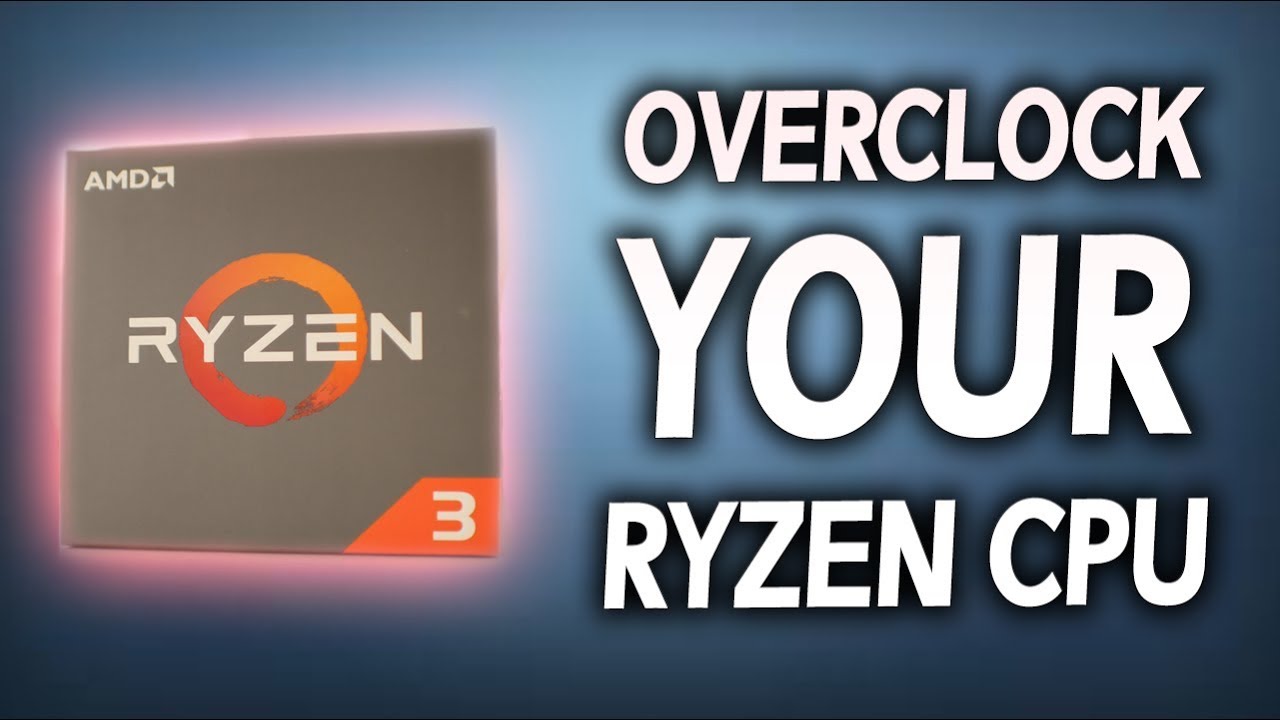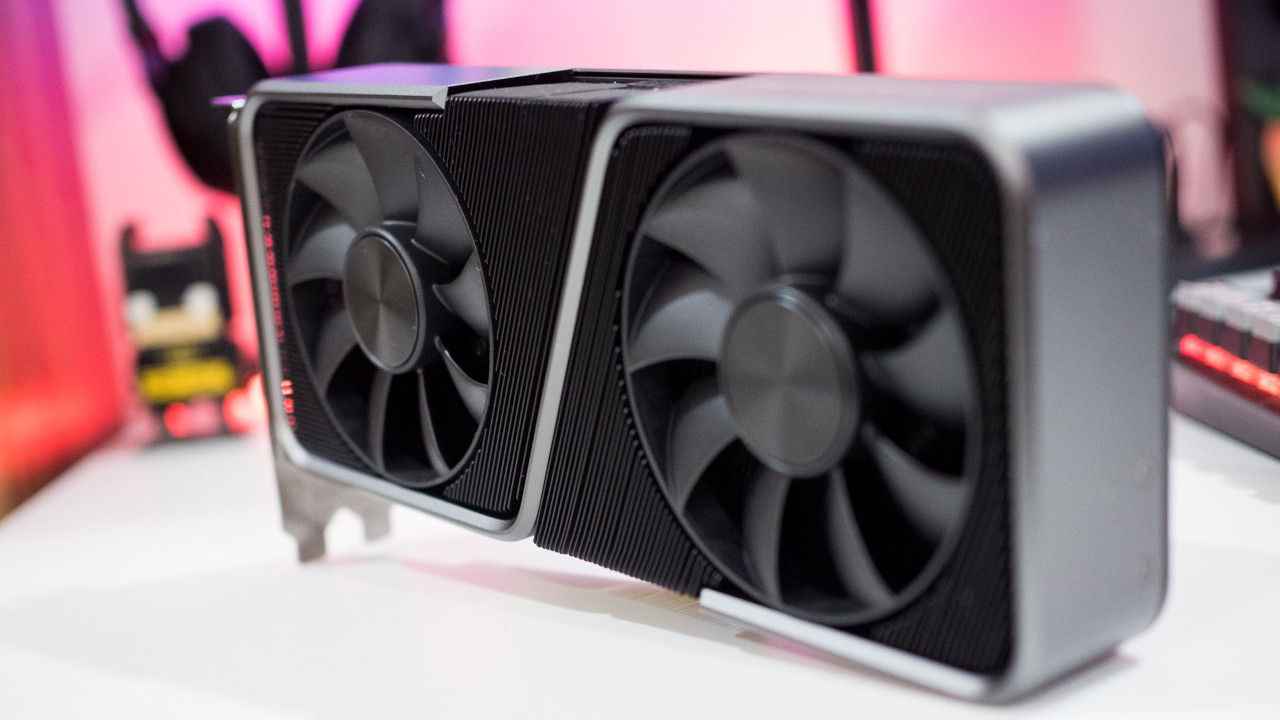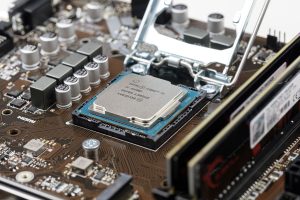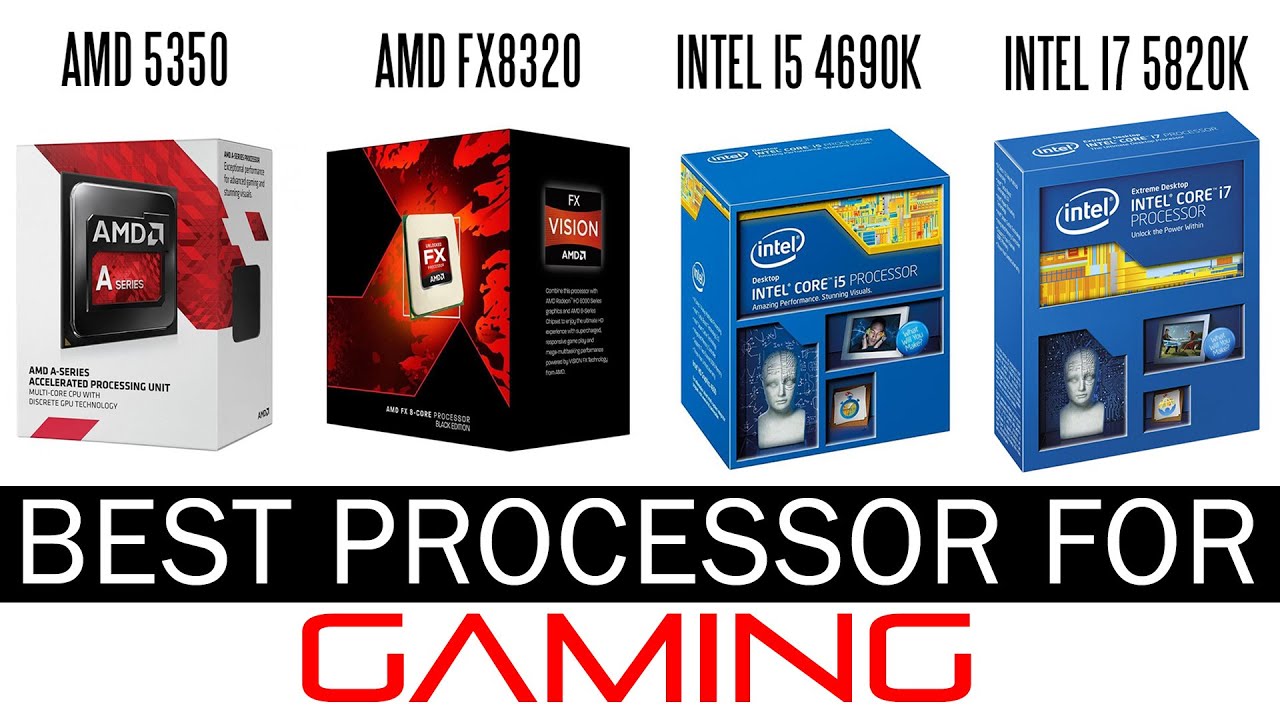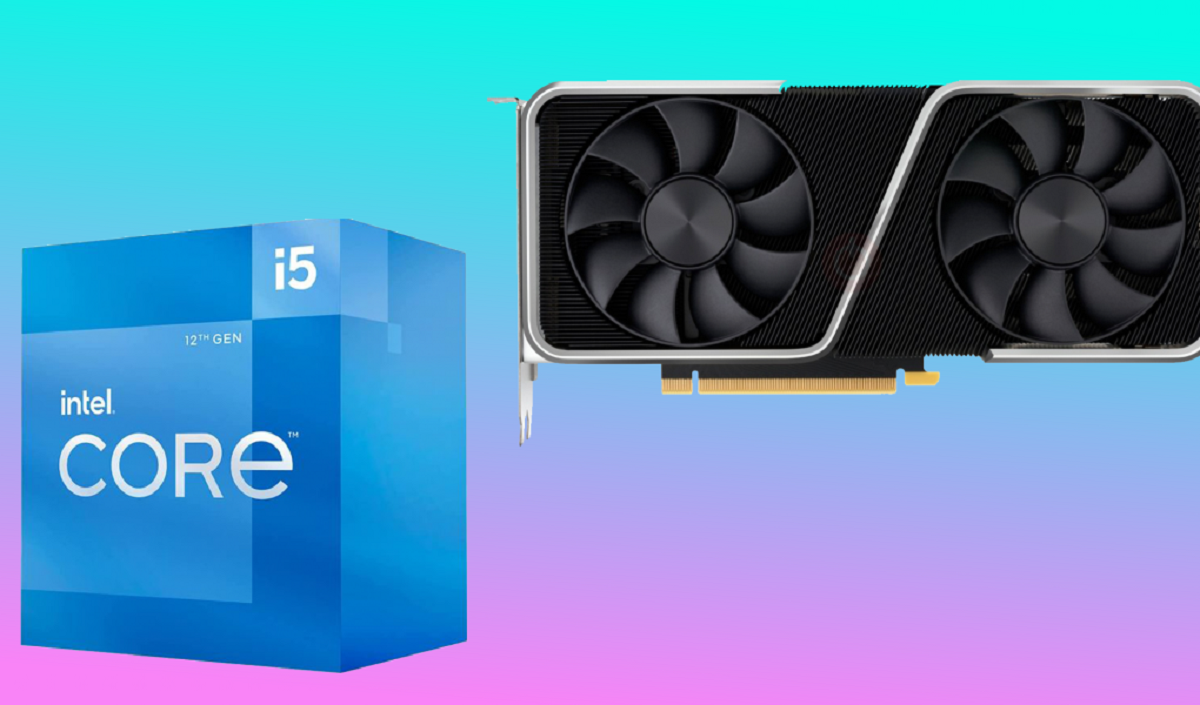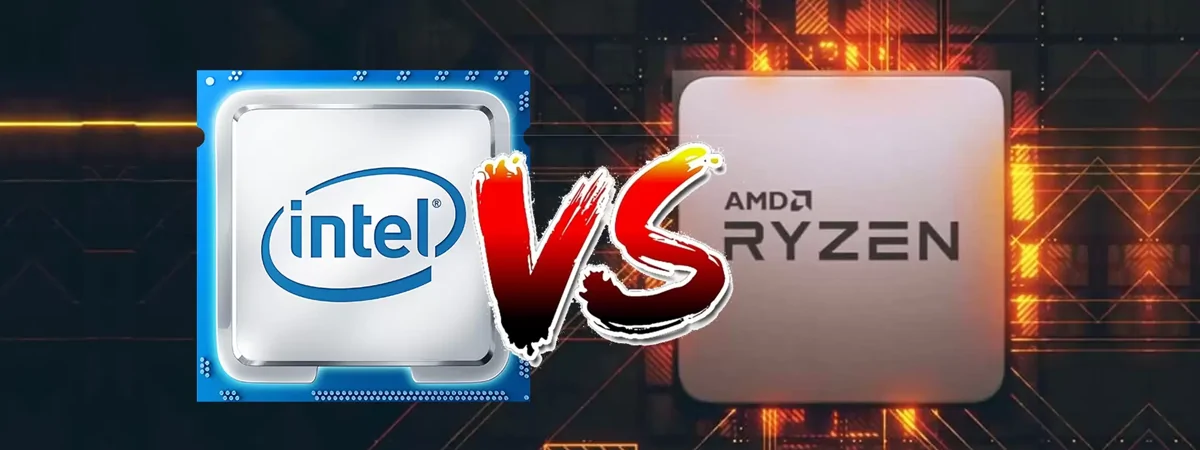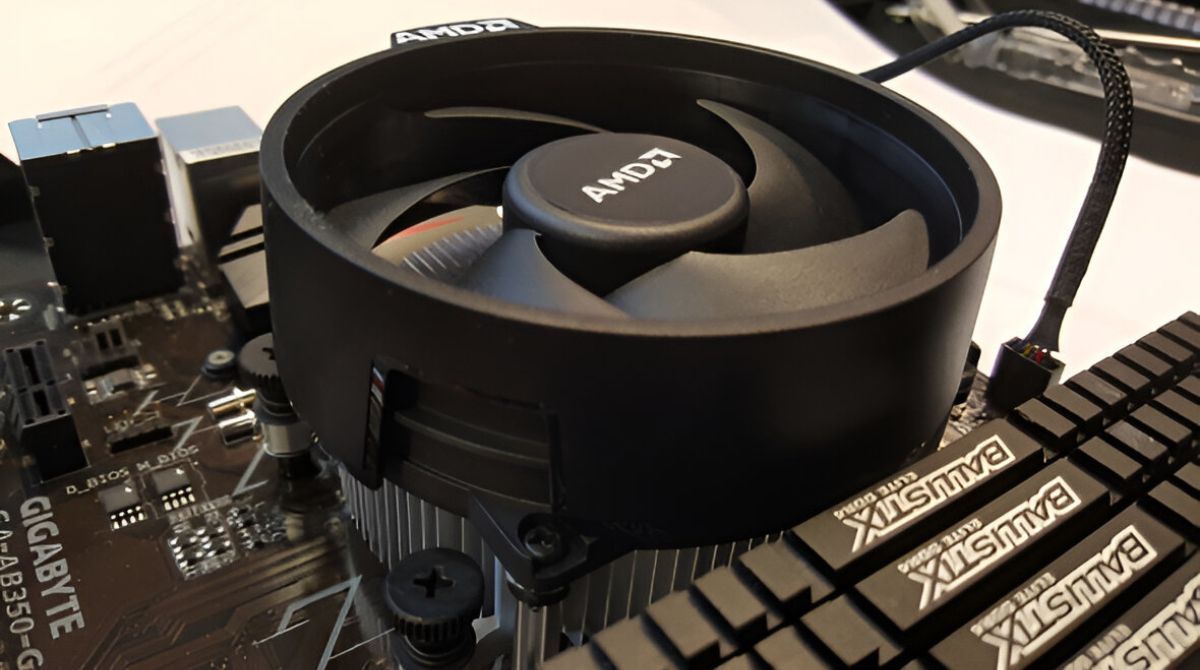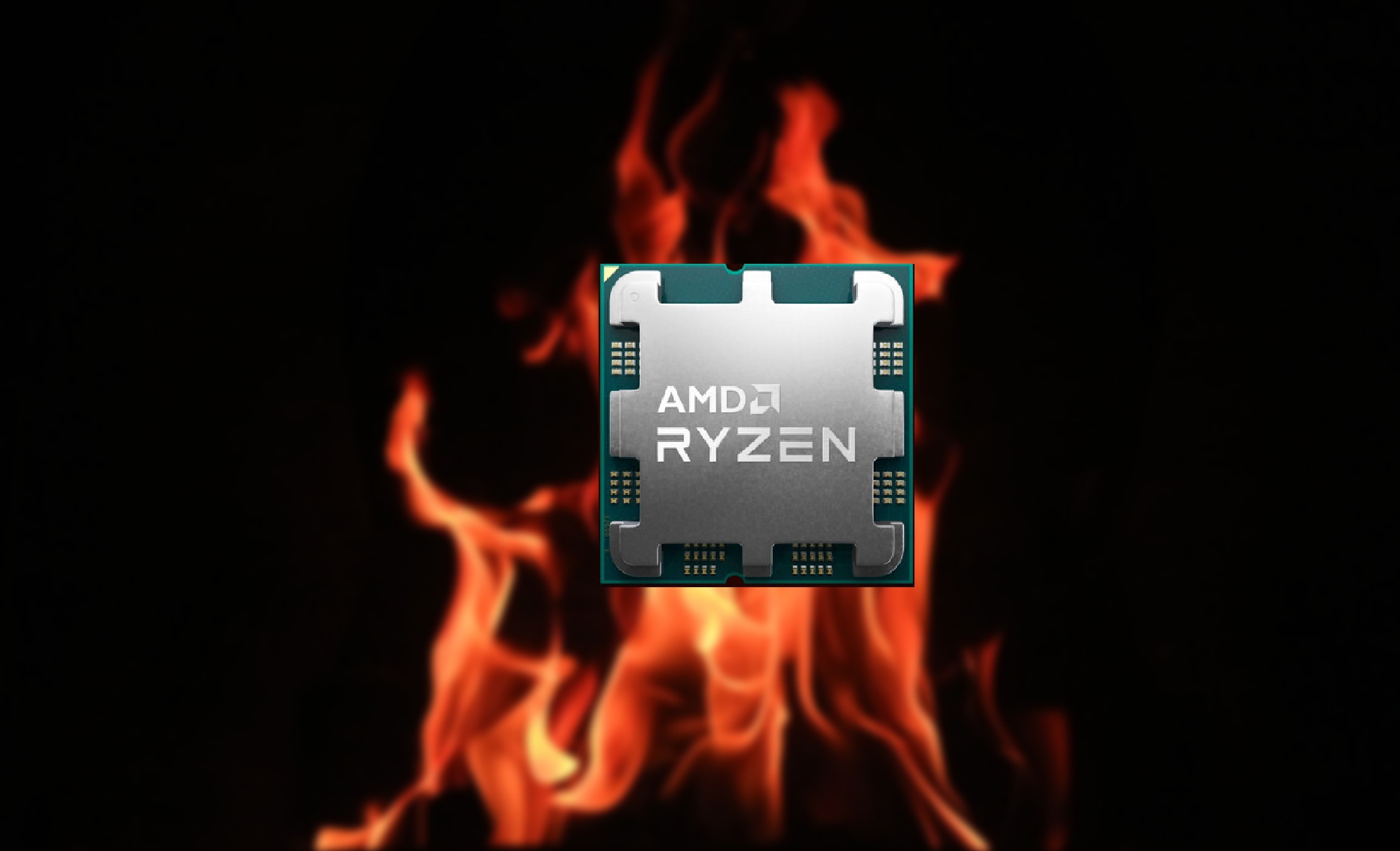Introduction
Overclocking is a term that many PC enthusiasts and gamers are familiar with. It refers to the process of increasing the clock speed of a computer’s central processing unit (CPU) beyond its default settings, in order to achieve improved performance. While overclocking can be performed on any CPU, this article will focus specifically on overclocking AMD CPUs.
AMD CPUs are known for their affordability and high performance, making them a popular choice among PC builders and gamers. Overclocking an AMD CPU can lead to even greater performance gains, allowing users to push the boundaries of their hardware and experience enhanced speeds and capabilities.
Before diving into the specifics of overclocking an AMD CPU, it’s important to note that this process carries some risks. Overclocking can generate additional heat and stress on the CPU, potentially shortening its lifespan or causing instability if not done correctly. Therefore, it’s crucial to approach overclocking with caution and take necessary precautions to ensure the longevity and stability of your system.
In this comprehensive guide, we will walk you through the step-by-step process of overclocking an AMD CPU, from selecting the right tools and monitoring your system’s temperatures to stress testing and troubleshooting common issues. Whether you’re a seasoned overclocker looking to push your AMD CPU to its limits or a newcomer interested in optimizing your CPU’s performance, this guide is designed to provide you with the knowledge and tools you need to safely and effectively overclock your AMD CPU.
So, if you’re ready to unlock the full potential of your AMD CPU and experience improved performance in your PC or gaming rig, let’s dive into the world of overclocking and get started on maximizing the power of your processor.
What is CPU Overclocking?
CPU overclocking is the process of increasing the clock speed of a computer’s central processing unit (CPU) beyond its factory-set default values. The clock speed of a CPU determines how many calculations it can perform per second, which directly impacts the overall performance of a computer.
When a CPU is overclocked, its clock speed is increased, allowing it to execute more instructions per unit of time and deliver faster processing speeds. This can result in significant performance improvements, especially in CPU-intensive tasks such as gaming, video editing, and 3D rendering.
The benefits of CPU overclocking are not limited to faster processing speeds. It can also lead to improved multitasking capabilities, smoother gameplay, and faster load times for applications and games. Overclocking can be particularly useful for users who demand high performance from their systems or those looking to extend the lifespan of their PCs without investing in new hardware.
It’s important to note that not all CPUs are created equal when it comes to overclocking. Some processors are designed with better overclocking capabilities, while others may have limitations due to their architecture or manufacturing process. AMD CPUs, in particular, are known for their overclocking potential and are highly regarded by enthusiasts for their value and performance in this regard.
However, overclocking a CPU isn’t without its risks. When you increase the clock speed, the CPU generates more heat and consumes more power. This can lead to increased temperatures, instability, and potentially cause damage to the CPU if not properly managed. Therefore, it is crucial to follow proper guidelines and take necessary precautions to ensure a stable and safe overclocking experience.
In the next section, we will discuss why you might want to overclock your AMD CPU and the potential benefits it can bring to your computing experience.
Why Overclock AMD CPU?
Overclocking an AMD CPU offers several advantages that make it an appealing option for PC enthusiasts and gamers alike. AMD processors are known for their excellent value and performance, and overclocking further enhances these qualities, unlocking even more potential from your hardware. Here are a few reasons why you might consider overclocking your AMD CPU.
1. Increased Performance: By overclocking your AMD CPU, you can achieve higher clock speeds than the default settings. This translates into faster processing times and improved performance, especially in CPU-intensive tasks such as gaming, video editing, and rendering. If you’re looking to boost your system’s overall performance and elevate your gaming experience, overclocking can deliver noticeable improvements.
2. Cost-Effective Upgrade: Overclocking allows you to extract more performance from your existing hardware without having to invest in expensive upgrades. If you’re on a budget or don’t want to splurge on a new CPU, overclocking can be a cost-effective way to get a performance boost and extend the lifespan of your system.
3. Competitive Gaming Advantage: In the world of competitive gaming, every advantage counts. Overclocking your AMD CPU can give you an edge by providing smoother gameplay, faster load times, and improved frame rates. It can make a difference in fast-paced games where split-second reactions can mean the difference between victory and defeat.
4. DIY Enthusiast Appeal: Overclocking is a popular activity among DIY PC enthusiasts. It allows you to tinker with your hardware, push its limits, and get the most out of your system. For those who enjoy the thrill of tweaking settings and achieving optimal performance, overclocking an AMD CPU can be a rewarding experience.
5. Future-Proofing: Overclocking can help future-proof your system by delaying the need for a complete hardware upgrade. By pushing your AMD CPU beyond its stock settings, you can keep up with the demands of new software and games, allowing your system to remain relevant for a longer time. This can save you money and ensure your PC can handle the latest technologies and applications.
While overclocking offers numerous benefits, it’s important to remember that it also comes with risks. Increased power consumption and heat generation can lead to higher operating temperatures and potential stability issues. Therefore, it is crucial to follow proper overclocking techniques, monitor temperatures, and ensure adequate cooling to maintain the longevity and stability of your system.
In the next section, we will discuss the precautions you should take before overclocking your AMD CPU to ensure a safe and successful overclocking process.
Precautions Before Overclocking
Before embarking on the journey of overclocking your AMD CPU, it’s essential to take several precautions to ensure a safe and successful overclocking process. By following these precautions, you can minimize the risks associated with overclocking and protect your hardware from potential damage. Here are some important steps to consider:
1. Research Your CPU: Before overclocking, thoroughly research your specific AMD CPU model to understand its overclocking capabilities and limitations. Each CPU has its own maximum safe voltage and temperature limits, which you need to be aware of to avoid pushing your hardware past its limits.
2. Ensure Sufficient Cooling: Overclocking increases the heat generated by the CPU. Therefore, it’s vital to have adequate cooling in place to dissipate the additional heat effectively. Investing in a high-quality CPU cooler and ensuring proper airflow within your system can help prevent overheating and maintain stable operation.
3. Study Your Motherboard: It’s important to have a motherboard that supports overclocking and offers robust power delivery to the CPU. Familiarize yourself with the BIOS settings and options related to overclocking. Ensure that your motherboard’s VRMs (Voltage Regulator Modules) are of good quality and can handle the increased power demands of overclocking.
4. Update BIOS and Drivers: Ensure that you have the latest BIOS version for your motherboard, as motherboard manufacturers often release BIOS updates that optimize performance and address issues related to overclocking. Similarly, keep your drivers for the CPU, chipset, and other components up to date to ensure compatibility and stability.
5. Monitor Temperatures: It’s crucial to monitor your CPU’s temperatures during overclocking to prevent overheating and potential damage. Use reliable temperature monitoring software to keep track of your CPU’s temperature and ensure it stays within safe limits. If temperatures become too high, consider adjusting your overclocking settings, improving cooling, or stepping back from aggressive overclocks.
6. Take Gradual Steps: Overclocking is an iterative process. Start with conservative overclocks and gradually increase the clock speed and voltage. Test the stability of your system at each step and monitor temperatures. Overclocking too aggressively from the start can lead to instability and potential damage to your hardware.
7. Stress Testing: After each overclock, stress test your system using benchmarking tools like Prime95 or AIDA64. This will help identify any stability issues or overheating problems that may arise under heavy loads. Stress testing ensures that your overclock is stable and reliable before using your system for everyday tasks or gaming.
By adhering to these precautions, you can minimize the risks associated with overclocking and ensure a safer and more successful overclocking process. In the next section, we will walk you through a step-by-step guide to overclocking your AMD CPU.
Step-by-Step Guide to Overclocking AMD CPU
Overclocking your AMD CPU can be a rewarding process that offers enhanced performance. However, it’s essential to approach it methodically and with caution to ensure a safe and stable overclock. In this step-by-step guide, we will walk you through the process of overclocking your AMD CPU.
1. Preparatory Steps:
- Ensure you have a capable cooling solution in place to handle the increased heat generated by the overclocked CPU.
- Update your motherboard BIOS to the latest version available, as it may contain optimizations for overclocking and improved stability.
- Download monitoring software to keep an eye on the CPU temperatures and system stability during the overclocking process.
2. Start with a Baseline:
- Before overclocking, establish a baseline by running stress tests and benchmarking your CPU at default settings. This will help you measure the performance gains achieved through overclocking.
- Note down the default CPU clock speed, voltage settings, and temperatures during this baseline test.
3. Enter BIOS and Adjust Settings:
- Restart your computer and enter the BIOS by pressing the designated key (usually Del, F2, or F12) during the boot process.
- Locate the CPU settings or overclocking options section in the BIOS. The exact location and terminology can vary depending on your motherboard manufacturer.
- Modify the CPU clock speed by adjusting the base clock (BCLK) or multiplier settings. Increase them gradually by small increments (e.g., 100MHz or 0.1) to avoid instability.
- Adjust the CPU voltage if necessary. Increasing the voltage can help stabilize higher clock speeds but should be done cautiously, keeping temperature limits in mind.
4. Save Settings and Boot:
- Save the changes you made in the BIOS and exit.
- Allow your system to reboot and enter the operating system.
5. Monitor Temperatures and Stability:
- Launch your monitoring software to keep an eye on CPU temperatures and system stability during the overclock.
- Use stress testing software to put your CPU under a heavy workload and check for stability or temperature issues. If problems arise, reconsider your settings and adjust accordingly.
6. Gradually Increase Clock Speed:
- If your system remains stable after stress testing, consider gradually increasing the CPU clock speed or voltage in small increments. Test for stability and monitor temperatures after each adjustment.
- Continue this incremental process until you reach a desired overclock or until you face stability or temperature limitations.
Remember, every CPU is different, and not all chips will overclock the same way. It’s essential to find the right balance between performance and stability while keeping your temperatures in check. Additionally, keep in mind that overclocking may void your CPU’s warranty, so proceed at your own risk.
In the next sections, we will discuss the tools required for overclocking, as well as how to monitor CPU temperatures and stress test your overclocked CPU for stability.
Tools Required for Overclocking
To successfully overclock your AMD CPU, you will need a few essential tools to monitor your system’s performance, make adjustments, and ensure stability. These tools will help you optimize your overclocking settings and keep your CPU running smoothly. Here are the key tools you need for the overclocking process.
1. Hardware Monitoring Software:
To keep a close eye on your CPU temperatures, system voltages, and other crucial parameters during overclocking, you will need reliable hardware monitoring software. Examples of popular monitoring software include HWiNFO, CPU-Z, and HWMonitor. These utilities provide real-time information about your CPU’s temperature, voltage, clock speed, and other vital stats, helping you keep your system within safe operating conditions.
2. CPU Stress Testing Software:
Stress testing software is critical to ensure the stability of your overclocked CPU. Programs like Prime95, AIDA64, and IntelBurnTest put a heavy load on your CPU, testing its performance and stability under extreme conditions. These stress tests can help identify any instabilities or overheating issues that may occur when your CPU is pushed to its limits. By stress testing your overclocked CPU, you can make adjustments and fine-tune your settings for maximum stability during prolonged heavy usage.
3. UEFI or BIOS:
Overclocking is usually done through the UEFI (Unified Extensible Firmware Interface) or BIOS (Basic Input/Output System) of your motherboard. These firmware interfaces allow you to make changes to various settings, including CPU clock speed, voltage, and multiplier. Familiarize yourself with your motherboard’s UEFI or BIOS interface and understand how to navigate and adjust the necessary settings for overclocking your AMD CPU. Consult your motherboard’s manual or manufacturer’s website for specific instructions on overclocking options and settings.
4. System Stability Testing:
In addition to stress testing your CPU, it is also important to check the stability of your entire system. Stability testing software such as Memtest86+ helps identify any issues with your system’s memory. It is crucial to ensure that your RAM is stable when overclocking your CPU to prevent crashes or system instability caused by incompatible memory settings or faulty modules.
5. Third-Party CPU Overclocking Software (Optional):
While overclocking through the UEFI or BIOS is the most common method, there are also third-party software utilities available that can assist in overclocking your AMD CPU. Utilities like Ryzen Master for AMD Ryzen processors provide a user-friendly interface to adjust various overclocking settings from within the operating system. These tools can make the overclocking process more accessible and offer additional features such as automatic overclocking profiles.
By utilizing these tools, you will have the necessary resources to monitor your hardware, stress test your CPU, and ensure system stability during the overclocking process. Remember to proceed with caution and adjust settings gradually to maintain the longevity and reliability of your AMD CPU.
In the next section, we will discuss how to monitor CPU temperatures during overclocking and the importance of maintaining optimal temperatures for a stable overclock.
Monitoring CPU Temperatures
Monitoring your CPU temperatures during the overclocking process is crucial to ensure that your AMD CPU is running within safe operating conditions. Overclocking generates more heat, and higher temperatures can lead to instability, reduced lifespan of the CPU, and potential damage to other components. By keeping an eye on the temperatures, you can make informed decisions and take necessary steps to maintain optimal cooling and system stability. Here are some methods to monitor CPU temperatures during overclocking.
1. Hardware Monitoring Software:
Utilize hardware monitoring software such as HWiNFO, CPU-Z, or HWMonitor to monitor CPU temperatures in real-time. These software applications provide detailed information about various system parameters, including CPU temperature, voltage, clock speed, and fan speeds. They often have customizable alerts and display options, allowing you to keep an eye on temperature changes and potential issues while overclocking.
2. BIOS/UEFI Interface:
Many motherboards have built-in temperature monitoring features accessible through the BIOS or UEFI interface. By entering the BIOS/UEFI, you can find temperature readings for your CPU and other components. This allows you to check temperatures directly from the motherboard and adjust settings if necessary.
3. On-Screen Display (OSD) Tools:
OSD tools, such as MSI Afterburner or EVGA PrecisionX, can display real-time CPU temperatures and other system information directly on your screen while you’re overclocking or gaming. These tools overlay the temperature information onto your screen, allowing you to monitor temperatures without switching between applications.
4. CPU Temperature Sensors:
Some advanced CPU coolers, such as all-in-one (AIO) liquid coolers or high-end air coolers, come with integrated temperature sensors. These sensors provide accurate temperature readings specific to your CPU, giving you a direct measure of your CPU’s thermal performance.
When monitoring CPU temperatures, it’s essential to keep in mind the safe operating ranges for your specific AMD CPU model. Consult the CPU manufacturer’s website to determine the recommended maximum temperatures for your CPU. As a general rule of thumb, aim to keep your CPU temperatures below 85-90 degrees Celsius during heavy usage to ensure optimal performance and longevity.
If you notice high temperatures during overclocking, consider taking the following steps to improve cooling:
– Ensure proper airflow in your system by optimizing fan placement and cable management.
– Clean accumulated dust from your CPU cooler and case fans to enhance cooling efficiency.
– Consider upgrading to a more robust CPU cooler, such as an aftermarket air cooler or a liquid cooling solution.
– Apply a quality thermal paste between the CPU and CPU cooler to improve heat transfer.
By monitoring CPU temperatures and taking the necessary steps to maintain optimal cooling, you can maximize the performance and stability of your overclocked AMD CPU. In the next section, we will discuss stress testing your overclocked CPU to ensure its stability under heavy loads.
Stress Testing the Overclocked CPU
Stress testing is a crucial step in the process of overclocking your AMD CPU. It involves subjecting your CPU to intensive workloads for an extended period to ensure its stability and performance under demanding conditions. By stress testing your overclocked CPU, you can identify any potential instabilities, overheating issues, or crashes that may occur when your CPU is pushed to its limits. Here’s how you can stress test your overclocked CPU effectively.
1. Select a Reliable Stress Testing Tool:
There are several stress testing programs available, such as Prime95, AIDA64, and IntelBurnTest. These tools will subject your CPU to demanding workloads to test its stability. Choose one that best fits your requirements and is compatible with your AMD CPU.
2. Configure the Stress Test:
Set the stress test to run for an extended period to ensure thorough testing. Typically, running the test for at least 6-12 hours is recommended to assess the stability of your overclocked CPU. It’s also important to utilize the maximum number of CPU cores available to simulate a realistic workload.
3. Monitor CPU Temperatures:
Use hardware monitoring software or the BIOS/UEFI interface to closely monitor your CPU temperatures during the stress test. Ensure that temperatures stay within safe limits to prevent overheating and potential damage to your hardware. If temperatures rise excessively, consider adjusting your overclocking settings or improving your cooling solution.
4. Observe System Stability:
Pay close attention to system stability during the stress test. Check for any crashes, system freezes, or error messages that may indicate instability. If the system becomes unstable, you may need to revert to lower clock speeds or adjust other settings to achieve a stable overclock.
5. Gradually Increase Clock Speed and Repeat:
After a successful stress test, you may choose to fine-tune your overclock further. Increase the clock speed or adjust other settings in small increments and re-run the stress test. Repeat this process until you find the highest stable overclock that your CPU can handle. Remember to monitor temperatures and stability after each adjustment.
It’s important to note that every CPU is unique, and not all chips will overclock the same way. Some CPUs may reach their stability limits sooner than others. Additionally, it’s crucial to strike the right balance between performance and stability, ensuring that your CPU remains cool and maintains stability during long gaming sessions or intense workloads.
Stress testing is essential to uncover any potential issues before using your overclocked CPU for everyday tasks or gaming. By performing thorough stress tests, you can ensure that your overclocked AMD CPU is capable of handling demanding scenarios reliably.
In the next section, we will discuss common overclocking issues that you may encounter and how to troubleshoot them effectively.
Troubleshooting Common Overclocking Issues
While overclocking your AMD CPU can yield significant performance improvements, it’s not without its challenges. Sometimes, you may encounter issues or complications during the overclocking process. Here, we will outline some common overclocking issues and provide troubleshooting steps to help you resolve them.
1. System Instability:
One of the most common issues when overclocking is system instability, which can manifest as random crashes, freezes, or blue screen errors. To address this issue, try the following:
– Reduce the overclock: If your system becomes unstable, revert to lower clock speeds or voltage settings.
– Increase voltage: If stability issues persist, you may need to incrementally increase the CPU voltage to provide extra power for stability. However, be cautious of temperature increases when adjusting voltage.
– Test RAM stability: Sometimes, system instability can be attributed to RAM issues. Run a thorough stability test on your memory using software like Memtest86+ and look for errors.
2. Temperature-related Problems:
Overclocking increases heat output, and inadequate cooling can lead to high temperatures. To tackle temperature-related overclocking issues, consider the following:
– Improve airflow: Ensure that your case has sufficient airflow by managing cables and ensuring proper fan placement. Consider adding additional fans or upgrading to a more efficient cooling solution.
– Repaste and reseat: Thermal paste degradation or improper installation of the CPU cooler can contribute to high temperatures. Apply a fresh layer of high-quality thermal paste and reseat the cooler to ensure proper heat transfer.
3. Failed Boots or Infinite Reboots:
In some cases, an overclocked CPU may fail to boot or enter an infinite reboot loop. To address this issue, try the following:
– Clear CMOS: Reset the motherboard’s BIOS settings to their default values by clearing the CMOS. Refer to your motherboard’s manual for instructions on how to perform a CMOS reset.
– Decrease clock speed and voltage: If you’re able to access the BIOS, manually reduce the clock speed and voltage to a stable level, then gradually increase them again to find the maximum stable overclock.
– Test individual components: Faulty hardware, such as RAM or the power supply, can cause boot failures. Test each component individually to identify the culprit.
4. Excessive Heat and Thermal Throttling:
When temperatures reach unsafe levels, CPUs can engage thermal throttling to protect themselves, resulting in reduced performance. To combat this issue, take the following actions:
– Improve cooling: Focus on achieving better heat dissipation by upgrading your CPU cooler or improving the overall airflow in your system.
– Lower voltage or clock speed: Reduce the overclock on your CPU to decrease heat output and alleviate thermal stress on the processor.
Remember that overclocking inherently carries some risks, so proceed cautiously and at your own risk. Regularly monitor temperatures, stability, and system performance to ensure a safe and reliable overclocked setup. If issues persist, consult online forums and resources dedicated to overclocking for further assistance and advice.
In the final section, we will conclude our guide to overclocking AMD CPUs and summarize the key takeaways from this comprehensive process.
Conclusion
Overclocking an AMD CPU can be an exciting and rewarding endeavor that allows you to unlock the full potential of your hardware. By carefully following the steps outlined in this guide, you can achieve higher clock speeds, improved performance, and an enhanced computing experience. However, it’s important to approach overclocking with caution and keep a few key points in mind.
Firstly, remember that each CPU is unique, and not all chips will overclock the same way. It’s crucial to find a balance between performance and stability that works for your specific CPU. Start with conservative overclocks and gradually increase settings while carefully monitoring temperatures and system stability.
Secondly, prioritize the cooling of your CPU when overclocking. Higher clock speeds generate more heat, and adequate cooling is essential to maintain stable operation and avoid potential damage. Invest in a quality CPU cooler, optimize airflow in your system, and monitor CPU temperatures closely.
Additionally, stress testing is a critical step to ensure the stability of your overclocked CPU. Thoroughly test your system using stress testing software to identify any potential instabilities or overheating issues. This will help you fine-tune your overclock settings and ensure optimal performance under heavy workloads.
Lastly, always keep in mind that overclocking may void your CPU’s warranty and carries inherent risks. Proceed at your own risk and understand that pushing your CPU beyond its designed specifications can lead to reduced lifespan or potential hardware failure.
By taking precautions, monitoring temperatures, stress testing, and troubleshooting any issues, you can safely delve into the world of overclocking and enjoy the benefits of increased CPU performance. With the proper knowledge, tools, and a patient approach, you can unleash the full potential of your AMD CPU and unlock a new level of computing power.
We hope that this comprehensive guide has equipped you with the information needed to successfully overclock your AMD CPU. Remember to always stay informed, seek expert advice, and tailor your overclocking techniques to your specific hardware and needs. Happy overclocking!







